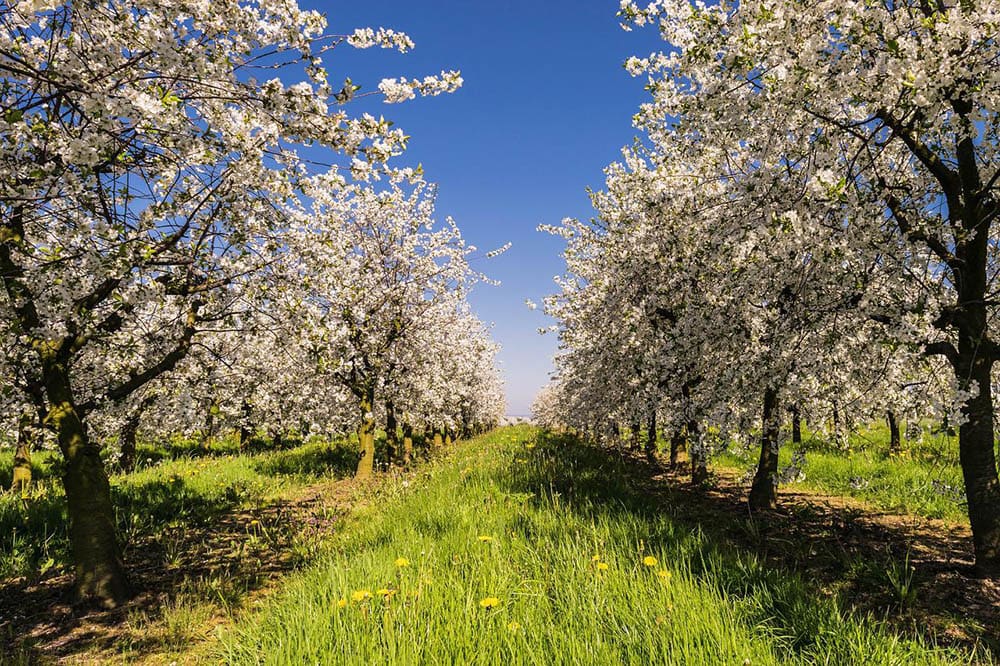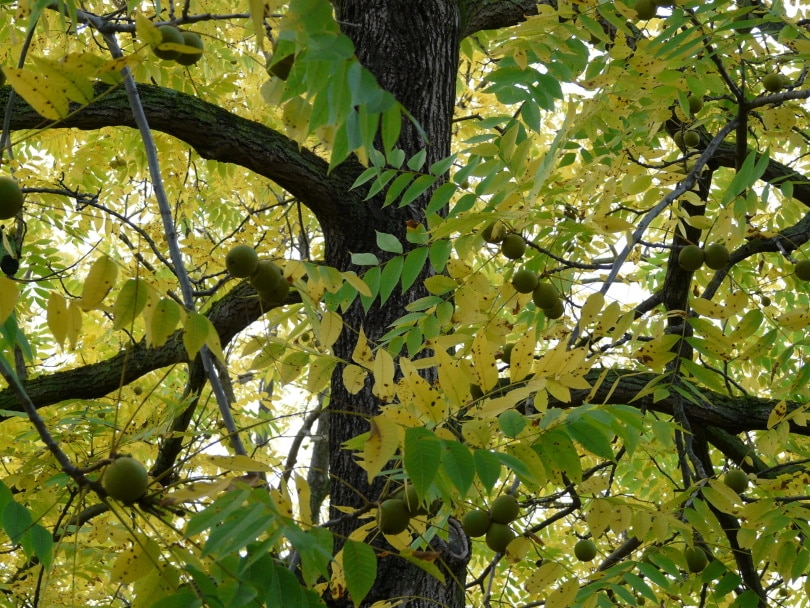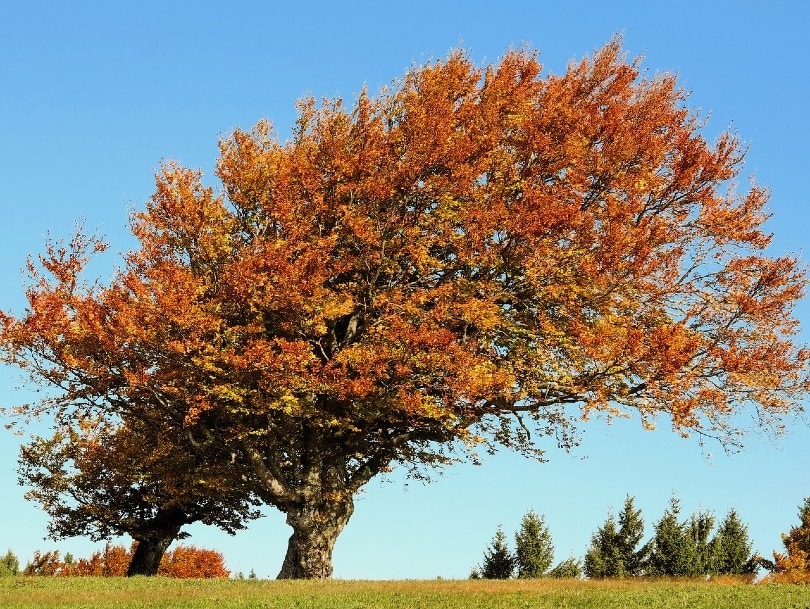How To Landscape Around a Tree with Exposed Roots: 5 Simple Steps
-
Pete Ortiz
- Last updated:

Trees are a beautiful long-term part of many people’s lawns and gardens. However, without the proper care, the area around trees can become unkempt and unsightly. Large exposed roots can appear through your grass, and the area around the tree can become an eyesore of exposed dirt and rocks. The good news is that you can landscape around a tree with exposed roots without damaging the health of the tree.
Here are 5 simple steps that will allow you to create a solid barrier around your tree, cover the exposed tree roots and transform a previously ugly area into a pleasing feature of your lawn.
Preparation

Before you start landscaping around any tree, especially ones with exposed roots, there are a few things you should do. First, identify what species of tree you are working around. It is important to know what kind of trees are in your yard so you can treat them appropriately. Next, examine the tree and determine its health. You should not disturb an unhealthy tree, or you risk exacerbating the problem and leading to a situation where you might need to have the tree removed. You should only work around healthy trees.
Once you have determined that the tree is healthy and safe, you can begin planning your landscaping project.
In order to landscape around a tree with exposed roots, you will need to gather a few things:
- Mulch (or equivalent)
- A border system
- Marking paint or flags
- Gloves
- Shovel
Once you have these items in hand, you can start the process of landscaping around your tree.
The 5 Simple Steps on How To Landscape Around a Tree with Exposed Roots
1. Mark Out The Area
The first step is to mark out the area in which you will be working. Create a rough area around the tree that encompasses all of the exposed roots. You do not want to put your borders on top of any exposed roots, so make sure whatever shape you make stays clear of the roots themselves. For some trees, this area will be quite large, sometimes as much as ten feet in diameter, while for other trees, the area can be quite small.
The shape you choose to mark out is up to you. You can use marking flags or paint to give yourself a nice border. The two most common shapes are squares and circles, but as long as the roots are enclosed within the space, you can draw any shape you want around the tree.

2. Create A Border
After you mark out your area, it is time to create your border. There are many options for landscape borders, and the options of what to choose are completely up to you. Common options for landscape borders include stone, brick, landscape timbers, railroad ties, and flexible composite borders. All of these options offer different styles and benefits, but none of them are better than any other.
If you are trying to make a circular border you might want to choose a flexible composite edging or individual stones for more versatility. Likewise, if you are creating a square border, there are some straight timbers that make for simple and easy-to-install borders. The final choice is entirely up to you.
The goal is to create a raised border that is at least three inches tall and one that is secure. You might have to bury the ends of some of these borders to ensure that they do not move or come out of the ground during the year.
Once you have chosen your border, lay it out following your outline and make sure that it is secure. Step back and make sure it looks good before continuing onward.
Find a brick and stone specialist in your area, and get free, no-commitment estimates for your project.Consult a landscaping expert

3. Determine What Type Of Cover To Use
There are a few different options to choose from when deciding on what to cover your exposed tree roots with. The best option is simple mulch. Mulch is natural, it looks good, and it breathes well. Some people also suggest using topsoil, potting soil, or gravel. These other options carry a little bit of risk, so be sure to take into account the species and health of your tree before settling on a final decision.
Gravel and soil can sometimes become too compacted and choke out the base of your tree which will lead to a decrease in its overall health.

4. Cover The Tree Roots
Now it is time to cover the roots. Using a shovel, create a uniform layer inside your barrier to cover your tree roots. If you are using soil or gravel, make sure not to layer the area too thick. Do not exceed one inch in height if you are using anything other than mulch for the best results.
Shovel in the material and smooth out the surface. Make sure all of the roots you are covering are buried under your material and make sure that the area is evenly covered within the borders that you put up.
5. Consider Using Plants As Well
If you do not want to risk putting soil or mulch under your tree, you can always landscape with plants as well. There are a variety of perennial ground cover plants that will happily grow under your tree and cover the exposed roots naturally.
Check your local gardening centers or extension office to identify the best plants for the job. The specific plants that can grow with the best results will depend on your geographic location, climate, and the species of tree you are working with.
You want to find perennial plants that can grow in the shade that you can plant around the base of your tree. Instead of layering mulch under the tree, you can insert well-spaced plants that will grow in the marked area and provide a green ground cover.

Do Not Damage The Roots!
During this process, it is imperative that you do not damage the roots of your tree. Large exposed roots that grow close to the base of a tree are usually the anchoring roots that keep the tree held upright. Damaging these roots can be catastrophic for the long-term health of your tree.
Avoid hitting the roots with a shovel or any other sharp instrument. Do not dig up the roots. Do not cut the roots. Do not bury your barrier on top of the roots. It is fine to cover the roots with the correct materials, but you should not alter or damage the roots in any way.
Tips For Protecting The Roots
Since the roots are one of the most important parts of a tree you should take care to protect them the best that you can. Covering the roots under a proper layer of mulch within a border will help protect the roots by marking the area off. But there is more that you can do to ensure a healthy tree going forward.
Make sure the area around your tree is well-drained. Do not pile up the soil, rocks, wood, or mulch around the base of the tree trunk. Having a layer of material that is too thick and too close to the tree can cause rot and decay to set into the roots which will slowly kill the tree over time. If you already have grass around the tree, it is best to leave the grass intact and plant ground covering foliage rather than adding mulch. Putting mulch over the top of grass can cause rot to set in.
Keep people away from the base of your trees that have exposed roots. You do not want people digging, driving, or stacking anything near the roots that could potentially damage them.
If you follow these steps, you will keep your tree roots from rotting or getting damaged while keeping your landscaping efforts intact.
Conclusion
By following these simple steps, you can turn an ugly root system into a pleasing landscaping feature. Sharp borders, bright mulch, and a defined area can turn a tree into a centerpiece. It can also help protect the roots and the base of your tree going forward, which will help keep your tree happy and healthy for longer.
See also:
- What Happens to Roots After Stump Grinding?
- How to Plant Bare Root Trees (Helpful Planting Guide & 6 Expert Tips)
Featured Image Credit: baechi, Pixabay
Contents



